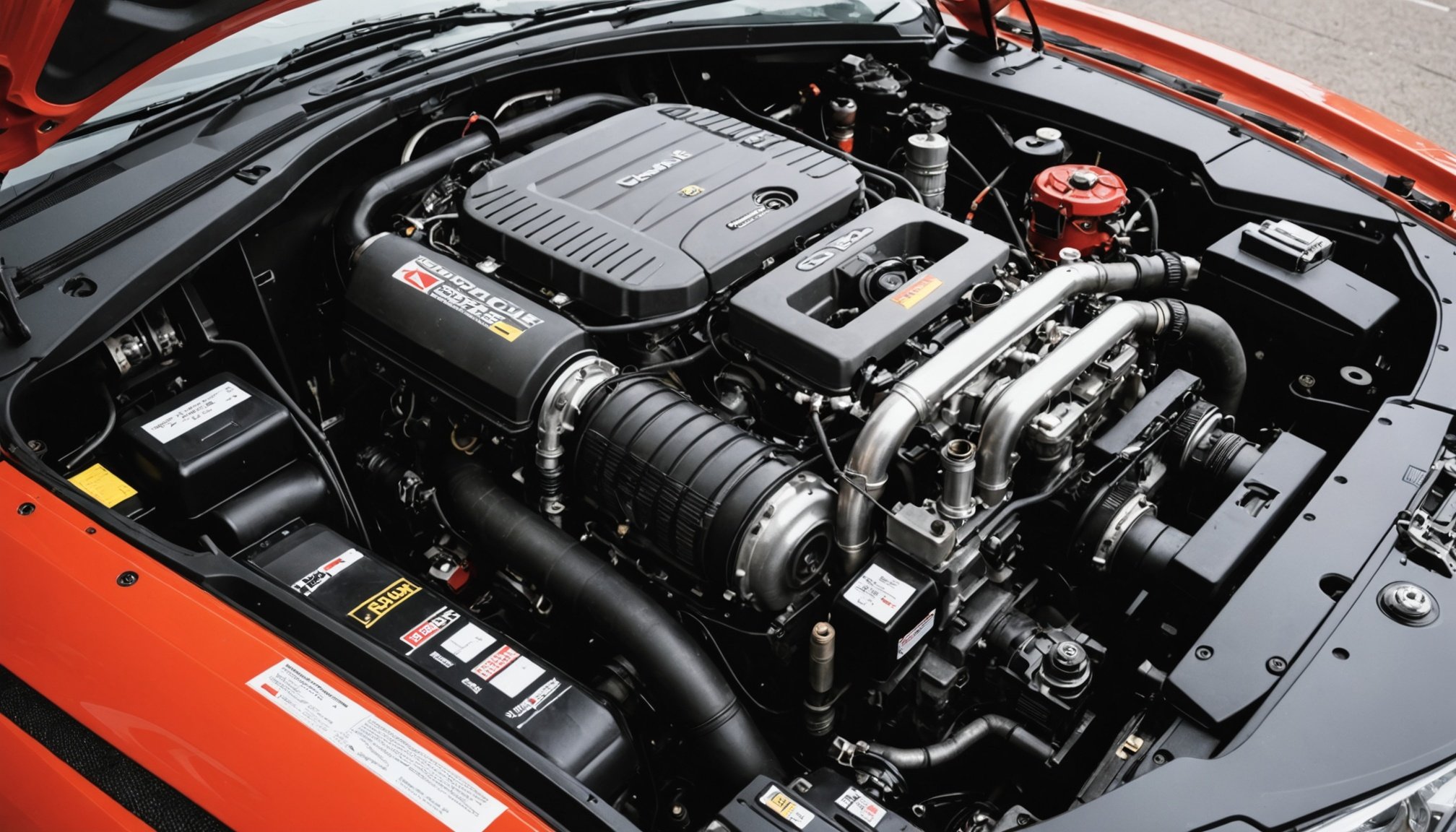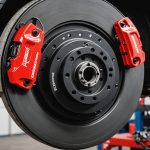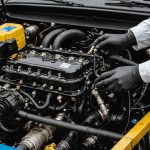Turbocharged engines are taking the UK automotive scene by storm, offering thrilling performance with enhanced efficiency. However, optimizing the air-fuel mixture can unlock the full potential of these powerhouses. By exploring tailored tuning techniques, drivers can experience smoother acceleration, improved fuel economy, and reduced emissions. This guide delves into practical methods to refine your vehicle’s performance, empowering you to elevate your driving experience and unleash the full capabilities of your turbocharged car.
Understanding the Air-Fuel Mixture in Turbocharged Engines
The air-fuel mixture is a critical component in the operation of a turbocharged engine. It refers to the combination of air and fuel that is ignited within the engine’s cylinders. This mixture plays a significant role in determining the engine’s performance and efficiency. In turbocharged engines, the air-fuel mixture is even more crucial due to the increased air pressure provided by the turbocharger, which forces more air into the engine cylinders.
The air-fuel ratio is a key factor that influences the performance of turbocharged engines. A balanced ratio ensures that the engine runs smoothly and efficiently. If the mixture is too rich (too much fuel), it can lead to incomplete combustion, resulting in higher emissions and reduced fuel efficiency. Conversely, a lean mixture (too much air) can cause engine knocking and potential damage over time.
Optimizing the air-fuel mixture is essential for performance optimization in turbocharged engines. This involves adjusting the ratio to achieve maximum power output while maintaining fuel efficiency and minimizing emissions. Proper tuning of the air-fuel mixture can enhance engine longevity and provide a smoother driving experience.
Techniques for Optimizing the Air-Fuel Mixture
Optimizing the air-fuel mixture in turbocharged engines involves a variety of techniques aimed at enhancing performance and fuel efficiency. These methods ensure the engine operates at its best, delivering power while maintaining efficiency.
Fuel Mapping Techniques
Fuel mapping is a sophisticated method used to fine-tune the air-fuel ratio. By adjusting the engine’s ECU (Electronic Control Unit), fuel maps can be altered to optimize performance under different conditions. This involves precise calibration to ensure the engine receives the right amount of fuel and air, improving both power output and fuel efficiency.
Adjusting Boost Pressure
Adjusting the boost pressure is another technique to optimize the air-fuel mixture. By controlling the amount of air forced into the engine, the boost pressure can be tweaked to match the ideal air-fuel ratio. This adjustment helps prevent issues like engine knocking and ensures the engine runs smoothly.
Utilizing Performance Chips
Performance chips are an effective tool for managing air-fuel ratios. These chips modify the engine’s parameters, allowing for more efficient combustion. By optimizing the air-fuel mixture, performance chips can enhance power and improve fuel efficiency, making them a popular choice for enthusiasts seeking better engine performance.
Modifications to Enhance the Air-Fuel Mixture
Enhancing the air-fuel mixture in turbocharged engines often involves strategic car modifications. These modifications not only improve performance but also ensure the engine operates efficiently.
Improving Air Intake
One of the most effective tuning upgrades is enhancing the air intake system. By allowing more air into the engine, the mixture becomes more balanced, contributing to better combustion. Aftermarket parts like high-performance air filters and cold air intake systems can significantly boost air intake, thus optimizing the air-fuel ratio.
Upgrading Fuel Injectors
Upgrading fuel injectors is another critical modification. Larger or more efficient injectors provide better control over the fuel delivery, ensuring a precise mixture with the incoming air. This upgrade is essential for maintaining optimal performance, especially when other modifications increase the engine’s air intake capacity.
Importance of Intercoolers
The role of intercoolers cannot be overstated when it comes to maintaining air density. By cooling the compressed air from the turbocharger, intercoolers ensure that the air entering the engine is denser, which is crucial for an efficient air-fuel mixture. This modification helps prevent the engine from running too lean and reduces the risk of engine knocking.
Tools and Equipment for Air-Fuel Mixture Tuning
Tuning the air-fuel mixture in turbocharged engines requires specialised tuning tools and diagnostic equipment. These tools are essential for achieving precise performance analysis and ensuring optimal engine efficiency.
Wideband O2 Sensors
Wideband O2 sensors are crucial for monitoring air-fuel ratios. They provide accurate, real-time data on the air-fuel mixture, allowing for precise adjustments. These sensors are more advanced than narrowband sensors, offering a broader range of readings, which is vital for fine-tuning the engine’s performance. By ensuring the mixture remains balanced, wideband O2 sensors help prevent issues such as engine knocking or inefficient combustion.
Data Logging Software
Data logging software is an indispensable tool for comprehensive performance analysis. This software records various engine parameters, providing insights into how the engine performs under different conditions. By analysing this data, technicians can make informed decisions about necessary adjustments, leading to improved engine efficiency and power output. It also aids in diagnosing potential issues before they become severe.
Dyno Testing
Dyno testing plays a pivotal role in fine-tuning engine performance. By simulating different driving conditions, dyno tests allow for precise adjustments to the air-fuel mixture. This testing method provides a controlled environment to measure performance changes accurately, ensuring the engine operates at its peak efficiency.
Case Studies of Successful Air-Fuel Mixture Optimization
Exploring case studies of vehicles that have successfully optimized their air-fuel mixture offers valuable insights into performance improvements. These real-world examples highlight the tangible benefits of precise tuning.
Analysis of Successful Vehicles
Several vehicles have demonstrated significant gains through air-fuel mixture optimization. For instance, a turbocharged sports car achieved a 15% increase in horsepower and a 10% improvement in fuel efficiency. This was accomplished through meticulous fuel mapping and boost pressure adjustments. Another case involved a family sedan, where optimizing the air-fuel ratio resulted in smoother engine performance and reduced emissions.
Key Performance Metrics
The key performance metrics achieved through these tuning efforts include:
- Enhanced horsepower and torque
- Improved fuel efficiency
- Reduced emissions and engine knocking
These metrics underline the importance of a balanced air-fuel mixture in achieving optimal engine performance.
Lessons Learned and Best Practices
From these case studies, several lessons and best practices emerge. Regular monitoring using wideband O2 sensors is crucial for maintaining an optimal air-fuel ratio. Additionally, investing in data logging software can provide continuous insights into engine performance, allowing for timely adjustments. These practices ensure sustained performance improvements and engine longevity.
Compliance and Regulations in the UK
Navigating the landscape of UK regulations is crucial for enthusiasts looking to modify their turbocharged engines. The UK has stringent emissions standards that directly impact how modifications, particularly those affecting the air-fuel mixture, can be legally performed.
UK Emissions Standards
The UK enforces strict emissions standards to reduce pollutants from vehicles. These standards dictate the allowable levels of emissions, such as nitrogen oxides and particulates, that a vehicle can emit. When modifying engines, it is essential to ensure that changes do not cause emissions to exceed these limits. Failure to comply can result in fines and the vehicle being deemed illegal for road use.
Importance of Compliance
Staying compliant while optimizing performance is not just a legal requirement but also an ethical one. Ensuring that modifications do not adversely affect emissions helps in maintaining air quality and supports environmental sustainability. Compliance also protects the vehicle owner from potential legal issues and financial penalties.
Resources for Legal Compliance
Several resources are available to ensure tuning practices remain within legal boundaries. These include consulting with certified tuning professionals, using approved parts, and regularly testing emissions levels. Additionally, staying informed about updates to UK regulations is vital for ongoing compliance.










